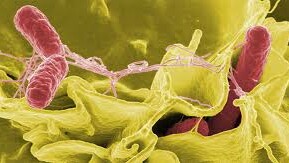
There are infinite amounts of gels, drinks and other sugar based products that are available for an athlete to take during an endurance event that may aid their performance. Knowing what to take, how much to take, the ideal time to take it, and when to stop, is somewhat confusing as every person is different and will respond and react differently to each product.
Following is a brief summary of how your gut acts as a filter for these products, and how it is critical to ensure that this filter does not become blocked. This “gut filter” was mentioned by David Eadie in our recent Fit To Run seminar. Much of the following article is based upon the writings of Mitch Anderson, triathlete, and the actual articles can be found on his website: www.mitchellanderson.com. We have tried to combine and simplify a few of these articles below.
 How Does Absorption Work?
How Does Absorption Work?
When talking of the gut, we are meaning the stomach and small intestine, and your gut has a threshold of absorption. If you cross this threshold (eg your gut is blocked from absorbing more food) it will shut down – a disaster in any event. If the gut is not absorbing, you are receiving to nutrients or fluid from it. Your gut is actually a filter of water primarily but also electrolytes and glucose. Lastly (due to the time taken to process) it is a filter for fats and protein.
Absorption into the gut is effected by three main factors:
1. Thermoregulation, or the ability to maintain a stable your body temperature despite environmental factors.
2. Exercise Intensity
3. Concentration of gut contents – similar to the way a build up of lactic acid causes a drop in performance, if you get too dehydrated or take in concentrated solutions, your gut will shut down.
There are five main areas involved in absorption of food and drink:
1. Fluid and glucose can be absorbed in your mouth quickly (especially sublingually, or below the tongue) due to the abundance of blood vessels. This is why chewing sugar based products (eg jelly beans) is a highly recommended strategy for a quick energy boost. Feeling dizzy during exercise is a critical warning sign indicating you are short of fluid or sugar, and at times like this, the jelly beans are king!
2. The oesophagus, or food pipe, is just a muscle tube across which nothing is absorbed. However it does have a one way valve (normally) that allows fluid into the stomach but not back up. If your stomach is full or not emptying well, you may feel reflux back into the oesophagus – the second critical warning sign you need to heed.
3. The stomach is the main collection bowl for food and fluid. The acid in the stomach breaks the food into smaller components that can be absorbed readily. Adequate fluid makes it easier for the food to pass to the next area for absorption. Too much of a product that is slow to absorb gives you the “bloated:” stomach feeling – the third critical sign you must be aware of. Anything you place in your mouth that isn’t glucose, fluid, or electrolytes (eg protein, fats and fibre – none of which are absorbed across the stomach membrane) will block the efficient absorption of the essentials. The added concentration of this non absorbable stomach contents also causes movement of fluid from the blood to the stomach (the wrong direction) to help neutralize this concentration
4. The small intestine is a conduit for glucose, fats, protein and electrolytes to be absorbed. In particular, salts (sodium and potassium), glucose and water are quickly absorbed in this region, and are therefore the key products for endurance events. This is the reason we have specially formulated sports drinks, in particular “isotonic” drinks as they can be quickly absorbed across the membrane of the small intestine, and do not clog the membrane. This is where problems can begin – adding fats or proteins (eg an energy bar) or carbohydrates (eg a gel) can clog the membrane, slowing absorption and causing a backing up of fluid in the intestine.
5. Your large bowel is the last stop absorption of water and electrolyte.
There are three main sources of energy during exercise: fat, protein and sugar.
• Protein, which is not vital.
• Fat, stored in relatively limitless supply but with limited access ability.
• Carbohydrate, which is readily absorbed, but stored in limited supply in the human body, meaning additional supplies are essential during races.
Fat and protein are not only non essential during exercise, but they clog the gut filter, so must be avoided on race day. Carbohydrate and electrolytes do clog the gut filter, but nowhere near as much as fats and protein, as there are specific “transporters” in the gut lining that aid the absorption of water, sodium and glucose
Water never truly clogs the filter and it can actually help flush extra carbohydrate and electrolytes through the system (this is why your gel packs say: “take with water”!).
Taste is a real stimulus for eating and drinking during exercise. It is important to train your mind to be able to take the carb/electrolyte/fluid products, rather than allowing your mind to force you into eating sub-optimal food and drink like bars or other solids. Just using sports drink in the correct concentration, and gels (plus or minus salt tablets) will provide you with every nutrient you need in a race spanning 1h to 15h. They will also assist in adding nutrients in the correct concentrations.
How much fuel do I put in?
Everyone is probably aware of the guideline of ingesting 1g carbohydrate per kilo of body weight per hour. This is an excellent guide to quantity, but does not take into account many other variables such as electrolyte quantity; mode of ingestion of carb.; exercise intensity; mode of exercise (bike or run); training state; clothing; timing of the race; early/late in the race; length of the event; heat; wind; and topography of the course – Who said it was simple?
How do you get it right? Here are a few tips:
• Firstly, remember how the filter works. Don’t clog it with protein or fat, or carbohydrate without water.
• Don’t be fooled by those tiny salt tablets, they can make a big difference to the efficiency of your gut.
• Think of your gut as a reservoir that requires constant topping up with water or concentrate, rather than letting it empty at any stage.
• Always associate taking gels with taking water, as it will assist your gut absorption greatly, especially when you’re at race intensity.
• Think about your gut filter getting finer (therefore more likely to clog) as any of the following variables alter: exercise intensity rises; it gets hotter; topography becomes hillier; it gets windier; it gets later in the race; or it’s a really long race. Essentially, all these elements compromise the amount of blood you can send to your gut, thereby slowing the rate at which it can absorb fluid.
• Think very carefully about your nutrition. Don’t just shovel it in to a schedule of 75g per hour, then get disappointed when your tummy ends up bloated. It’s a complex organ, which interacts with many elements of your race. So treat it with respect, by thinking about your fluid as you put it in.
• What are the over fill danger signs?
• If you’ve never pushed your gut or your body to its limit, then this won’t have happened to you during exercise. Remember the churning in your stomach when you try to drink that first cup of fluid after a bout of gastro? That’s your warning sign during exercise that your gut is not emptying. If you notice this feeling, STOP the carbs and electrolytes immediately, and take some water.
• Slowing down will also allow more blood to be sent to your gut, and aid emptying. Keep the brakes on your pace until your gut is tolerating fair doses of water.
Finally, whilst it is nearly impossible to train at race intensity and therefore learn what your gut will tolerate under these loads, use training sessions (particularly intense ones) to practice your nutrition plan, observe the response, learn the warning signs of the filter clogging, and know what you are going to do if these signs come on!
You might like these other resources
Why Do My Joints Ache In Cold Weather?
11 June 2025
The Role of Ice in Managing Acute Sporting Injuries
17 September 2024
Are Your Bones Strong Enough?
28 May 2024





